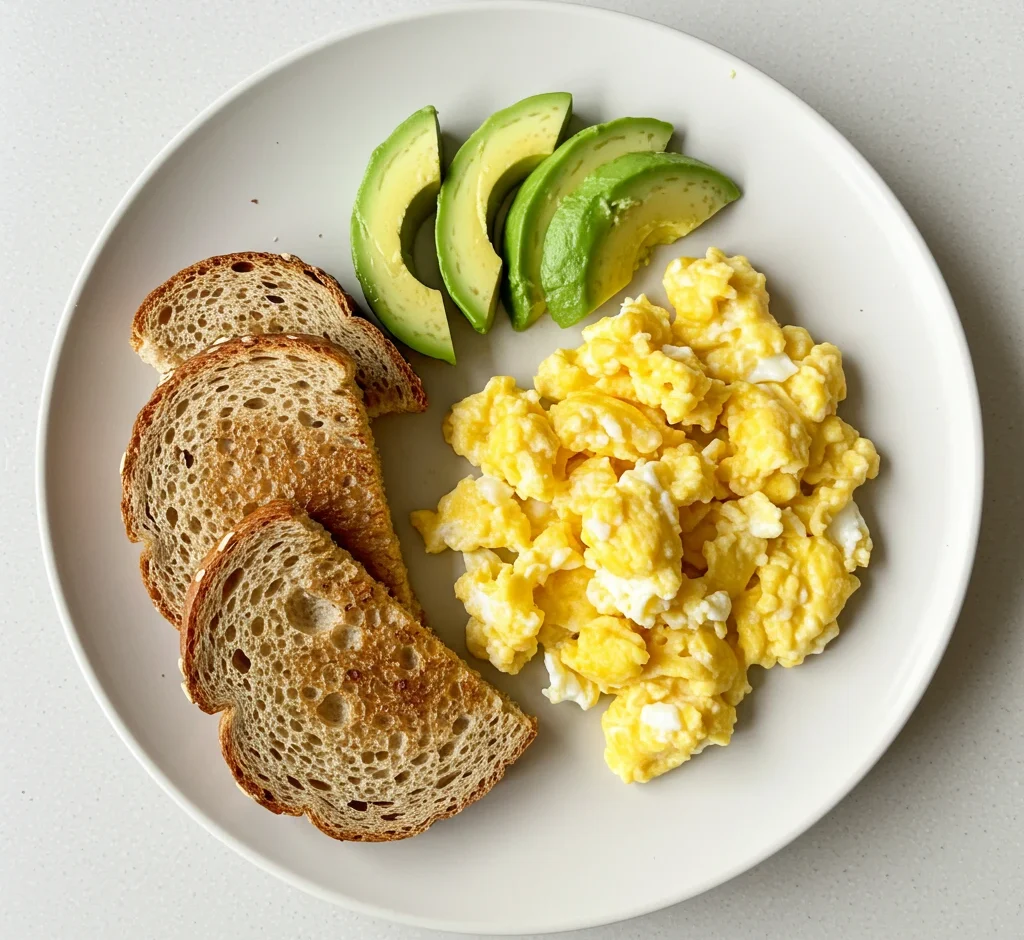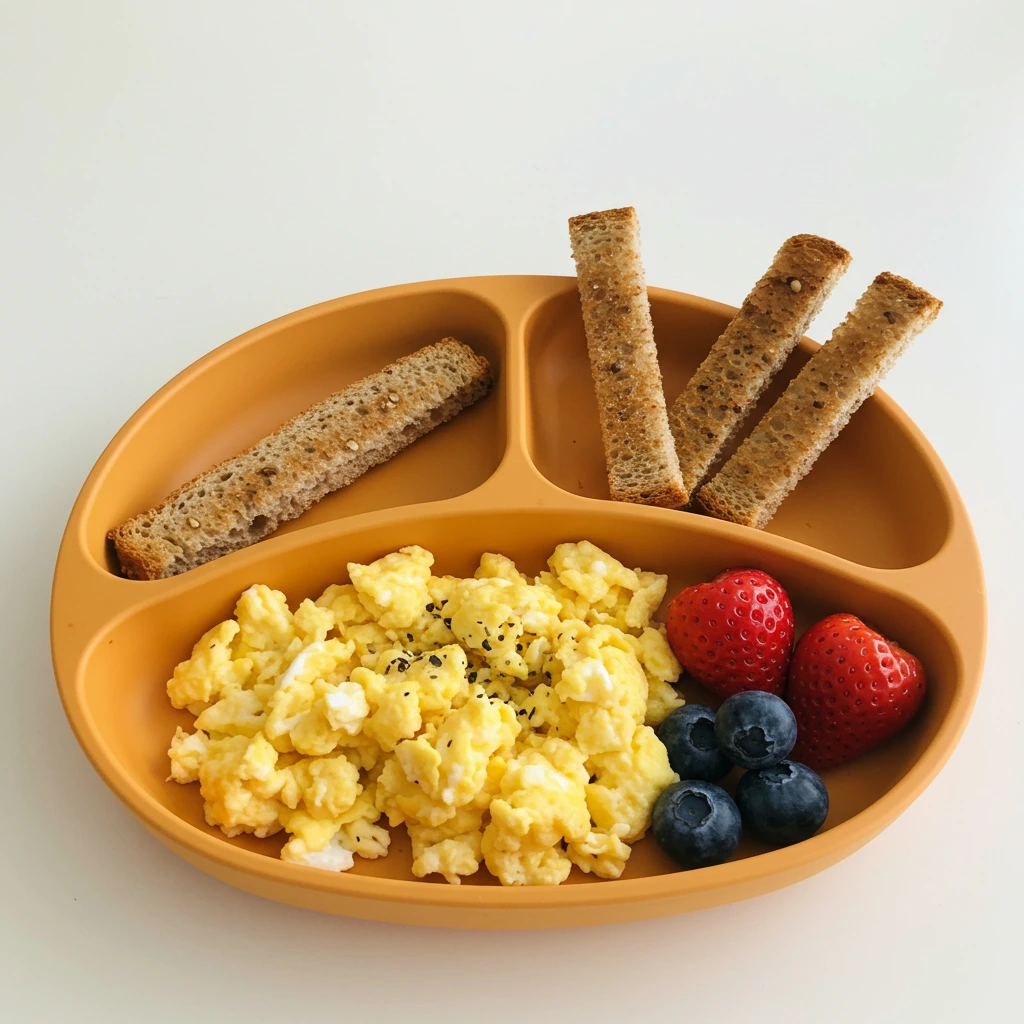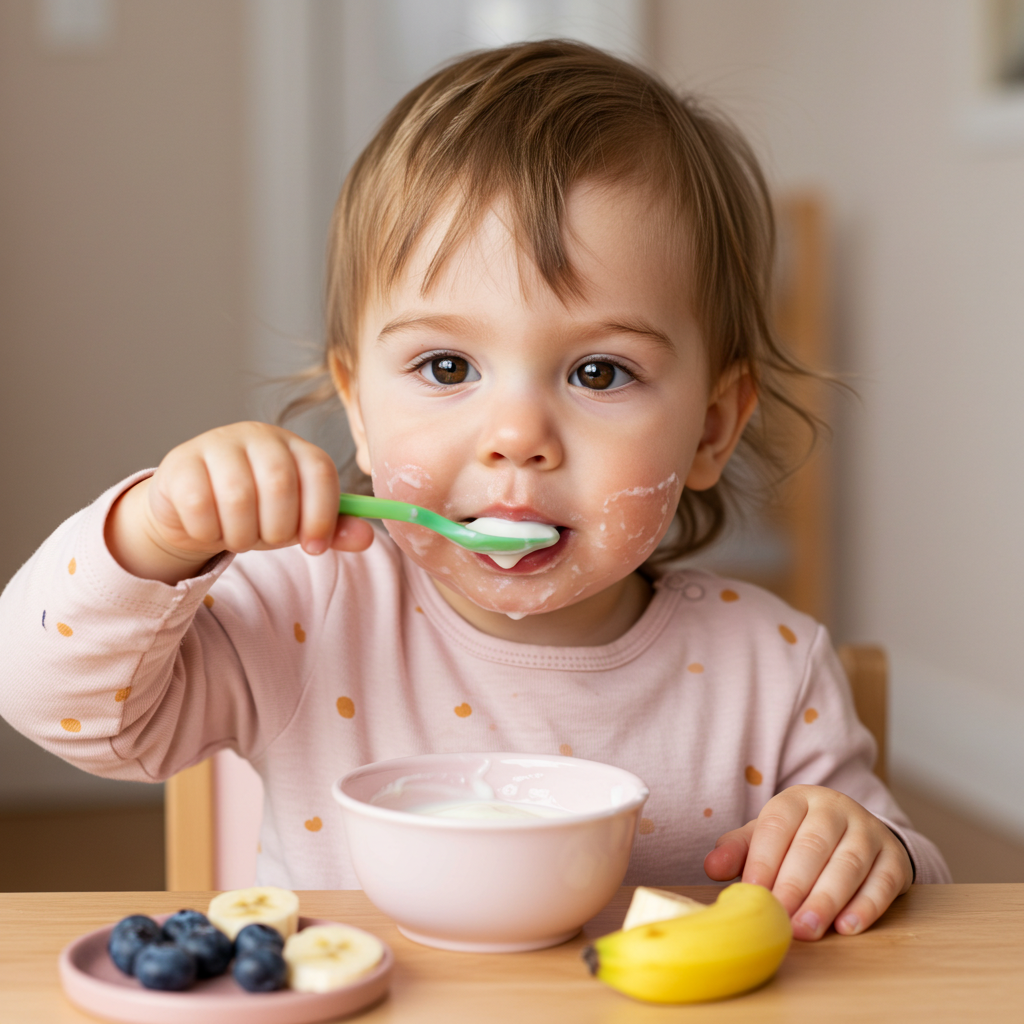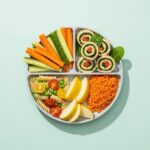
Introduction
If your mornings feel rushed and stressful, you’re not alone. Parents often ask: “How can I get my toddler to eat a healthy breakfast before we’re out the door?” Between picky eating, time pressure, and the constant mess, it can feel impossible to serve something nutritious first thing in the morning.
That’s where balanced toddler breakfast meal plans come in. Having a plan helps you save time, reduce stress, and make sure your child gets the nutrients they need to start the day strong.
In this article, you’ll discover:
- What makes a balanced breakfast for toddlers,
- A weekly toddler meal prep breakfast plan you can actually follow,
- Easy, healthy recipes that even picky eaters will try,
- Expert tips and trusted sources on toddler nutrition.
As a parent, I struggled with breakfast for months. My daughter only wanted toast and refused fruit. Once I started planning ahead with simple rotations—like oatmeal on Mondays, egg muffins midweek, and smoothies on Saturdays—breakfast became easier and healthier
Table of Contents
“The meal plan table has been a lifesaver. Now I know exactly what to serve without second-guessing.” – Sarah L., mom of a 2-year-old
“My picky toddler finally eats yogurt and fruit thanks to the weekly plan.” – David R., dad of twins
Let’s start by understanding what makes a balanced toddler breakfast and why it’s so important.
What Makes a Balanced Toddler Breakfast?
A balanced breakfast fuels your toddler with the right mix of energy, growth nutrients, and brain power. According to the American Academy of Pediatrics (AAP), toddlers thrive on meals that include carbohydrates, protein, and healthy fats.
The Three Building Blocks of a Balanced Toddler Breakfast
- Carbohydrates – The main energy source. Examples: oatmeal, whole grain toast, bananas, berries.
- Protein – Supports muscle and tissue growth. Examples: eggs, yogurt, nut butter, milk.
- Healthy Fats – Crucial for brain development and lasting energy. Examples: avocado, olive oil, chia seeds.
Portion Sizes for Ages 1–3
Toddlers don’t need adult portions. Here’s a simple guide:
- Grains/Carbs: ¼–½ cup cooked oatmeal, rice, or ½ slice toast
- Protein: ½ egg, 2–3 oz yogurt, or 1 Tbsp nut butter
- Fruits/Vegetables: 2–3 tablespoons, chopped or mashed
- Dairy: ½ cup milk or yogurt
Expert Tip: “Toddlers need smaller, frequent meals. A balanced breakfast with protein and fat helps avoid energy crashes mid-morning.” – Dr. Laura Peña, Pediatric Nutritionist
Foods to Limit or Avoid
- Sugary cereals (can spike energy, then crash)
- Juice with added sugar (whole fruit is better)
- Choking hazards like whole grapes, raw carrots, or large nuts
Starting your day with toddler balanced breakfast ideas ensures your child has steady energy for play, learning, and growth.
Sample Balanced Toddler Breakfast Meal Plans
When you don’t have a plan, mornings quickly turn into chaos. A weekly toddler meal prep breakfast plan ensures variety, nutrition, and less stress. Rotating meals also helps picky eaters gradually try new foods.
Here’s a simple 7-day balanced toddler breakfast meal plan you can follow or adapt to your family’s needs:
| Day | Breakfast | Balance |
|---|---|---|
| Monday | Oatmeal with banana and almond butter | Carbs + Protein + Healthy fats |
| Tuesday | Scrambled eggs, whole grain toast, fruit | Protein + Carbs + Fiber |
| Wednesday | Greek yogurt with oats and berries | Protein + Carbs + Antioxidants |
| Thursday | Veggie egg muffins + avocado toast | Protein + Healthy fats + Fiber |
| Friday | Mini pancakes + nut butter + milk | Carbs + Protein + Calcium |
| Saturday | Smoothie (banana, spinach, yogurt) | Carbs + Protein + Vitamins |
| Sunday | Baked oatmeal cups with raisins | Carbs + Fiber + Iron |
This plan is easy to prep ahead: cook egg muffins and baked oatmeal cups on Sunday, freeze pancakes, and pre-pack smoothie bags. That way, you’ll always have healthy breakfast for toddlers ready to go.
Breakfast for Specific Ages and Needs

Not every toddler eats the same way. Age, appetite, and special needs all play a role in building the right toddler balanced breakfast ideas.
Breakfast for a 1.5-Year-Old
At this age, toddlers are developing chewing skills and independence. Meals should be soft, safe, and cut into small pieces. Examples:
- Mashed banana with oatmeal
- Scrambled egg with soft toast strips
- Yogurt with mashed berries
Avoid hard or choking-hazard foods like whole nuts or raw carrots.
Balanced Meals for Picky Eaters
Some toddlers refuse anything green or new. The key is to make food fun and familiar:
- Serve smoothies in colorful cups
- Add shredded veggies into muffins or pancakes
- Offer “sampler plates” with 3–4 small portions instead of one big serving
This approach makes breakfast recipes for toddlers more approachable.
ADHD-Friendly Toddler Breakfasts
For children with ADHD, breakfast can make a big difference in focus and energy. Experts recommend meals that are protein-rich, low in sugar, and include complex carbs.
- Scrambled eggs with avocado on whole grain toast
- Greek yogurt with nuts and seeds
- Smoothie with spinach, banana, and nut butter
Expert Tip: “Protein-rich breakfasts support attention and reduce mid-morning crashes in children with ADHD.” – Academy of Nutrition and Dietetics
Choosing the best breakfast for toddlers with ADHD helps set the tone for calmer, more focused mornings.
Toddler Breakfast Meal Prep Tips

Meal prepping isn’t just for busy adults—it works wonders for toddlers too. By spending 1–2 hours on the weekend, you can prepare a week of healthy breakfasts for toddlers and cut down on weekday stress.
Why Meal Prep Works for Toddlers
- Saves time on busy mornings
- Reduces the temptation of processed “quick fixes”
- Keeps portions toddler-sized and ready to go
- Encourages variety throughout the week
Smart Prep Strategies
- Batch cook: Make a double batch of pancakes, egg muffins, or oatmeal cups and freeze extras.
- Rotate options: Plan for 3–4 recipes per week and alternate to keep toddlers interested.
- Label containers: Use masking tape to write the date and meal on each container.
- Mix and match: Prep “base” foods (like pancakes or muffins) and pair with fresh fruit or yogurt for balance.
Storage & Reheating Guide
Here’s a practical table showing how long toddler meal prep breakfast foods can be stored safely:
| Meal Type | Fridge Life | Freezer Life | Reheating Tips |
|---|---|---|---|
| Overnight oats | 3–4 days | Not recommended | Serve cold or let sit at room temp 10 mins |
| Egg muffins | 3 days | Up to 2 months | Microwave 30–40 sec, cover with damp towel |
| Pancakes/waffles | 5 days | Up to 2 months | Toast or microwave for 20 sec |
| Baked oatmeal cups | 4–5 days | Up to 1 month | Microwave 20–30 sec, serve warm |
| Smoothie packs (unblended) | Not applicable | Up to 2 months | Blend straight from frozen with milk |
Quick Tip
Always test the temperature before serving to toddlers. Microwaves can create hot spots, so stir well and cool before serving.
Meal prep helps parents consistently deliver toddler balanced breakfast ideas while reducing morning stress.
Expert Sources & Guidance
Parents often wonder: “Am I really giving my toddler the right breakfast?” The good news is, experts agree on a few key principles.
What the Experts Say
“Toddlers need balanced meals with carbs, protein, and healthy fats to support growth and learning. Skipping protein in the morning often leads to energy crashes before lunch.”
— Dr. Laura Peña, Pediatric Nutritionist
The NHS Start4Life program also emphasizes variety and balance, encouraging parents to offer whole grains, fruits, vegetables, and dairy at breakfast.
FAQs
What is a balanced breakfast for toddlers?
A balanced toddler breakfast combines carbohydrates, protein, and healthy fats. For example: oatmeal with banana (carb), yogurt (protein), and nut butter (fat). This mix supports steady energy and growth.
What should a toddler eat first thing in the morning?
Toddlers should eat a light but nutrient-rich meal within 30–60 minutes of waking up. Options include fruit with yogurt, scrambled eggs with toast, or overnight oats. These healthy breakfasts for toddlers help stabilize blood sugar after fasting overnight.
What to give a 1.5 year old for breakfast?
A 1.5-year-old benefits from soft, easy-to-chew foods: mashed banana with oatmeal, yogurt with mashed berries, or scrambled eggs cut into small pieces. Always avoid choking hazards like whole grapes or large nuts.
What do ADHD kids eat for breakfast?
Children with ADHD do best with protein-rich, low-sugar breakfasts. Examples: scrambled eggs with avocado toast, Greek yogurt with nuts, or a smoothie made with spinach, banana, and peanut butter. These choices help with focus and prevent energy crashes.
Conclusion
A calm, nutritious morning is possible when you plan ahead with balanced toddler breakfast meal plans. By rotating meals like oatmeal, yogurt parfaits, eggs, and smoothies, your toddler gets variety and nutrition without the stress.
The key is consistency. Prepping just a few meals on Sunday sets your family up for success all week. Whether you’re caring for a picky eater, a 1.5-year-old learning new textures, or supporting a child with ADHD, balanced breakfasts make all the difference.
Next step: Try following the 7-day plan in this guide. Adjust it to your toddler’s taste, and within a week, you’ll notice smoother mornings and healthier eating habits.
Don’t miss our related guide on Make-Ahead Toddler Breakfasts for even more time-saving ideas.








